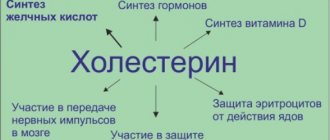- Home >
- Clinic services >
- Electrocardiography (ECG)
Electrocardiography is one of the most famous, widespread and accessible ways to study the functionality of the cardiovascular system. ECG is a non-invasive and absolutely safe method for the human body. It is based on recording the electric fields that are formed as a result of the work of the heart, and their graphical display on electronic or paper media.
Indications for an ECG
- Suspicion of heart disease
- Hypertension or suspected hypertension
- Arrhythmia
- Hypercholesterolemia
- Pain/discomfort in the heart area
- Dyspnea
- Excess weight
- Preparing for surgery
- Pregnancy
- Presence of occupational risks and bad habits
- Chronic stress
- Age over 40
- Past infections
Shelf life of ECG in children
Children are also given this informative method of heart examination in different cases:
- before the operation;
- if you suspect the presence of cardiac pathologies;
- for preventive purposes to obtain a medical report on the state of health and the possibility of attending physical education classes; for admission to secondary or higher educational institutions;
The shelf life of an ECG for a child is:
- before surgery – 2 weeks;
- for preventive purposes, to obtain a certificate – 6 months.
Where to get an ECG
You can undergo electrocardiography and receive a detailed doctor’s report based on the results of the study at the MART multidisciplinary medical center. An ECG in our clinic is a highly accurate examination of the cardiovascular system, with which you can identify various disorders and, based on the data obtained, take the necessary measures in a timely manner and prevent the development of a pathological process.
—>
At the MART clinic on Vasilyevsky Island
- Evidence-based medicine
- Experienced specialists
- Monitoring of patients for 6 months.
- Diagnostics (MRI, ultrasound, tests)
- Daily 8:00 – 22:00
Make an appointment
Our ECG office is equipped with the most modern equipment, which ensures maximum accuracy of the study. Diagnostics and interpretation of results are carried out exclusively by experienced specialists.
A referral for an ECG at the MART clinic is not required.
How to prepare for an ECG
The purpose of an ECG is a thorough study of the functioning of the heart muscle under normal conditions. Therefore, in order for the ECG results to be objective, a number of simple conditions must be met.
It is recommended to limit liquid intake the evening before. On the day of the procedure, you should get a good night's sleep, refrain from physical activity and refrain from drinking coffee, tea and other drinks that stimulate cardiac activity. The last meal should be no later than 2 hours before the ECG. It is advisable to arrive for the procedure in advance so that you can sit quietly, relax and restore your breathing for 15–20 minutes.
You should also take a shower before the procedure. However, the use of fatty creams and body oils is excluded, as they prevent good contact of the electrodes with the skin and can distort the ECG results.
It is recommended to come to the procedure in comfortable, easily removable clothing.
If you have any questions, ask our specialist! Ask a Question
ECG for a child: features of the procedure
An ECG is performed on a child in the same way as on an adult. The only difference is that smaller sensors are used. To conduct the examination, the child is placed on his back on a couch, and sensors are connected to the chest, wrists and legs. Before connecting to the body, the sensors are treated with a degreasing agent. After connecting all the sensors, the device is turned on, which records the cardiogram, producing a tape with a graph. The duration of the procedure is about five minutes. The examination does not require special preparation; the only recommendation is to refrain from physical activity and stress 15 minutes before taking the cardiogram.
The first ECG is usually performed on a child in the first year of life as part of a mandatory medical examination. The sooner the diagnosis is carried out, the sooner pathologies can be identified and measures can be taken to eliminate them. When conducting an ECG, it is important to lie still while at rest, so in the case of a small child, it is advisable to have toys or a book with bright pictures on hand - these items will help keep the baby occupied during the examination and distract from inconvenience. A preventive ECG is also carried out in preschool age and upon entering first grade.
Indications for an unscheduled electrocardiogram include:
- developmental delay;
- high blood pressure;
- endocrine disorders;
- pain in the heart area;
- detection of murmurs when listening to the heart with a stethoscope;
- dizziness;
- dyspnea;
- fatigue and drowsiness;
- frequent ARVI;
- swelling of the limbs;
- pallor of the skin during physical activity.
Also, a reason for prescribing an examination is a hereditary predisposition to cardiovascular diseases. An ECG of the heart is a painless and absolutely safe diagnostic method, so the examination can be carried out frequently without any fear.
A cardiogram will not tell an untrained person anything - it’s just a graph with teeth, so after taking a cardiogram you need to contact a specialist. Cardiologists and functional diagnostic doctors decipher cardiograms. The decoding process involves studying the shapes and intervals of all teeth, as well as a comprehensive assessment of the cardiogram. An experienced specialist will be able to decipher the cardiogram, identify all deviations from the norm and make an accurate diagnosis.
How to do an ECG
The ECG is performed while lying on the couch. Electrodes connected to an electrocardiograph are installed on areas of the body freed from clothing and lubricated with a special conductive gel - the chest, arms and legs. This device registers and processes cardiac impulses and produces a graphical representation of the potential difference that occurs during the work of the heart and is conducted to the surface of the body, in the form of an electrocardiogram.
The process of taking an ECG does not cause the patient any discomfort at all and does not require any additional action from him.
The duration of the procedure is no more than 10 minutes. The results are given to the patient on the day of the study.
How to decipher an ECG
The results of the electrocardiogram are a paper tape with a graphic display of the processes of contraction and relaxation of the heart muscle. Decoding an ECG is a detailed analysis of the resulting curve, based on the study of its waves, intervals and segments, their duration, position relative to each other and other parameters.
Only a specialist can correctly interpret an ECG. Based on the results, he can promptly determine the need for additional studies (EchoCG, laboratory tests, ultrasound of internal organs) or immediately develop or adjust a treatment plan.
What disorders can be detected using an ECG?
Electrocardiography allows you to assess the regularity and frequency of heart contractions, the general condition and thickness of the myocardial walls. Using this method you can diagnose:
- arrhythmias of various origins and cardiac conduction disorders;
- all kinds of ischemic changes due to coronary heart disease or myocardial infarction;
- hypertrophy of the left or right ventricle;
- disturbances in the metabolism of potassium, magnesium and calcium;
- heart defects.
How long do ECG results last?
An ECG is often performed as part of a comprehensive examination before surgery. In this case, an ECG with interpretation is usually valid for 1 month. In other cases, the exact expiration dates of the test results must be clarified with your attending physician or the organization to which the test results will be sent, or where further diagnostic or therapeutic procedures will be performed.
How often should you do an ECG?
People without diseases of the cardiovascular system are recommended to undergo an ECG routinely once a year. This is especially important once you reach the age of 40.
You should also not postpone performing electrocardiography when the first alarming symptoms of cardiovascular diseases occur.
If there are direct indications, the frequency of the study is determined by the doctor.
What specific tests need to be taken?
Complete blood count (CBC)
It is the blood, which ensures the saturation of all cells with vital elements, that shows even minimal changes in the body. Regardless of what additional special tests the doctor may prescribe before hospitalization, it is the OAC that comes first. The analysis allows us to detect inflammation in the body and suspect pathologies of various organs. The main emphasis in deciphering this analysis is given by doctors to the number of leukocytes and red blood cells, as well as the level of hemoglobin.
When serious changes in blood parameters are detected in a patient, additional tests are prescribed.
Blood chemistry
The study provides more complete information about the condition of individual organs. Neither diagnosis nor treatment of most diseases can do without this research.
Important indicators:
- Glucose level. A decrease in level indicates disturbances in the functioning of the liver and thyroid gland, and an increase indicates the likelihood of diabetes mellitus.
- Bilirubin level. Shows the condition of the liver and gall bladder.
- Cholesterol level. Important for a correct assessment of the functioning of the cardiovascular and endocrine, as well as the nervous systems.
- AST, ALT, and Gamma-GT are enzymes that provide insight into liver function.
- Total protein, albumin. Their decrease indicates pathological processes occurring in the kidneys or liver, and their increase indicates the presence of infectious inflammation.
- Creatine and urea. Substances that provide information about kidney function.
- C-reactive protein (CRP) level. The presence of protein indicates the presence of inflammation.
- Iron. A microelement that is part of hemoglobin and is actively involved in the process of hematopoiesis and transports oxygen to all tissues.
Analysis to determine blood type and Rh factor
One of the mandatory studies performed before hospitalization or surgery. The analysis can be prescribed in cases where there is at least a minimal likelihood of blood loss. Information is necessary for the use of donor blood or organs; they must match the group and Rh factor. Compliance with this condition may reduce the risk of rejection of the blood used.
Coagulogram
The study reveals the degree of coagulation in the blood, this helps to correctly assess the risks associated with possible blood loss during surgery. Deviations in these indicators may indicate the presence of problems that may create certain difficulties during treatment. The analysis is mandatory for pregnant women and before operations.
Blood tests for infections (HIV, hepatitis, syphilis).
The detection of these infections is not a contraindication to necessary treatment or hospitalization. If they are identified, treatment is carried out, but with additional safety measures. Also, their presence in the human body can significantly reduce the rate of healing of wounds and sutures.
Results for all infections (HIV, syphilis, hepatitis), normally, should be “not detected”. If positive test results are detected, special confirmatory tests are performed.
Please note that in order for the results of an HIV test to be accepted upon hospitalization, you must present a passport when donating blood, otherwise the result will be anonymous.
Analysis of urine
The study helps to assess the general condition of the body, and not just the urinary system. It is mandatory before any hospitalization and during preventive examinations.
Fluorography
Allows you to determine the general condition of the respiratory system. It is prescribed when the patient has not undergone fluorography for a long time (more than six months).
ECG
Using a cardiogram, the doctor can assess the condition of the heart. Based on its results, the doctor can build a strategy for further treatment and intervention.










